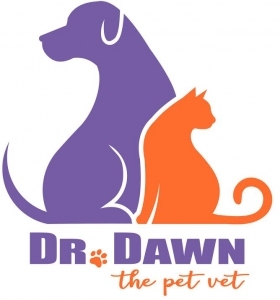I have many older patients that have arthritis. There are various options available to help decrease the discomfort of my furry friends. Keeping their weight down, glucosamine supplements, pain medication, fatty acid supplements, laser therapy, acupuncture, chiropractors, swimming/water therapy, holistic therapy formulations, and stem cell therapy, to name more than a few. But, let’s not forget something important for all of these patients. That is trying to maintain the muscle mass and flexibility that they still have, or even trying to improve upon it. This helps them support their weight, without being dependent on the already compromised bones and joints affected by disease, no matter the cause.
There are home rehabilitation exercises prescribed by specialists, for patients that I treat. I think that they are beneficial parts of the treatment process, and thought I might share them with you. If this applies to you, consider trying them out.
The additional benefits of these exercises are to:
improve balance, strength and coordination
reduce pain and make your pet more comfortable
improve joint function and mobility
promote weight bearing and enhance overall fitness
reeducate the body to normal limb function in situations where it was lost.
1. Pain management massages for hip dysplasia/hindlimb conditions. First: gently massage the limb(s) to help with circulation, reduce spasming and help muscle tone. This will also help reduce the formation of adhesions. Gently stroke the hindlimb muscles from the back downward and upward again, to help relax the muscles. Then gently apply light pressure with the tips of the fingers in a circular motion along the front and back thigh muscles and hip area. Perform for 8 to 10 minutes, twice a day, if able.
2. Slow, controlled leash walks. Start at 8-10 minutes a day, 3-4 times a day (give or take a few minutes, depending on your pet’s level of activity). Increase walk time by 2 minutes each week if pet is doing well. Walk on varying terrains such as concrete, dirt, grass, and mulch. Let your pet be the guide as to how much is too much, or too little.
3.Once a day on one of your walks, try to perform ONE of the following exercises. Alternate them during the week.
– Happy Trails: Place 10-15 treats in a row and allow pet to pick them up. This helps with bending of elbows and shifting of weight to forelimbs. Perform twice a day.
– High Fives: Urge your pet to raise forelimb and “high five” you so that he/she is extending elbow and shifting weight to opposite forelimb.
– Curb Stepping: Walk your pet in a serpentine fashion up and down off the curb. Perform 10 feet in one direction and 10 feet in the opposite direction.
– Zig-zag/weaving cones : Walk for 20 feet in each direction in this manner.
– Circling: Walk pet in large circles first with the affected limb to the inside of the circle. Repeat 2 times. Reverse and walk your pet in a large circle in the opposite direction/with affected limb to the outside of the circle. Repeat 2 times.
– Figure 8’s: Walk pet in large figure 8s. Repeat 3 times.
Dr. Dawn
Please share and subscribe here






